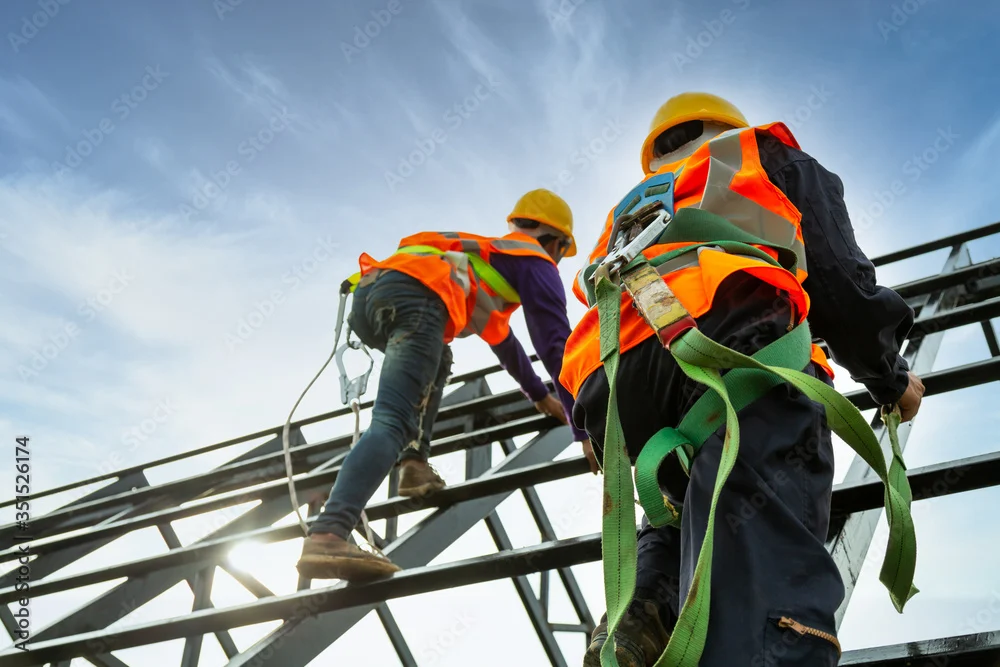<p>Working at heights is often mistakenly simplified to a matter of measuring vertical distance—many believe that risk begins at a certain minimum height, such as two meters or six feet. However, safety in such situations is far more complex than a number on a measuring tape. The reality is that danger exists whenever a fall could cause injury, regardless of whether someone is working on a tall scaffold or just a short step above the ground. ;</p>



<p>We will explore why relying solely on a height threshold can create a false sense of security, and how real-world risk factors—ranging from environmental conditions to task complexity—play a much more significant role in determining safety requirements. Through proper <a href="https://safelinegroup.ca/training/working-at-heights/">working at heights training in Ottawa</a>, individuals can better recognize these overlooked hazards and take proactive measures to reduce risk. By understanding these elements, businesses and workers can create safer environments that address actual hazards, not just regulatory cutoffs.</p>



<h2 class="wp-block-heading">Looking Beyond Height: Understanding the True Risks</h2>



<ol class="wp-block-list">
<li><strong>Surface and Environment Conditions Matter More Than the Tape Measure</strong> </li>
</ol>



<p>Height alone does not determine the severity or likelihood of a fall-related injury—surface and environmental conditions can be equally critical. For example, a worker standing only 50 centimeters above the ground on a wet, slippery surface can be in more danger than someone on a dry, well-guarded scaffold three meters high. Loose gravel, uneven ground, or oily flooring can drastically increase the risk of slipping and losing balance. Even indoor environments are not exempt—polished tile floors or areas with sawdust can be just as treacherous. ;</p>



<p>Lighting also plays a role; dimly lit workspaces reduce visibility and increase the likelihood of missteps. Environmental factors such as wind, rain, snow, or temperature extremes compound these hazards. When such conditions are ignored simply because the work is “below the minimum height,” accidents become more likely. This is why safety evaluations must always include surface stability and environmental hazards, regardless of how far from the ground the worker is.</p>



<ol start="2" class="wp-block-list">
<li><strong>Task Complexity and Movement Increase Risk</strong> </li>
</ol>



<p>It’s not just where you are, but what you’re doing that determines your exposure to danger. A worker performing a simple inspection on a stable platform might face less risk than someone making rapid, complex movements on a small, narrow surface close to the ground. Activities like reaching overhead, carrying heavy or awkward loads, using both hands for tools, or twisting the body can affect balance and coordination. In some industries, workers are required to handle delicate instruments or machinery while elevated, making it easier to lose focus on footing. Fatigue, distraction, and unfamiliarity with the task can all increase accident probability, even when the height is minimal. Employers must therefore consider not only the elevation but also the type of work being performed, the worker’s posture, and the required range of motion. A purely height-based safety rule overlooks the dangerous interplay between task complexity and stability.</p>



<ol start="3" class="wp-block-list">
<li><strong>Fall Distance Is Not Equal to Injury Severity</strong> </li>
</ol>



<p>While it seems logical that higher falls lead to more severe injuries, reality is more complicated. Many serious injuries have occurred from falls under one meter, especially when the landing surface is hard or uneven. A sudden drop onto concrete, steel, or rocky terrain can cause fractures, concussions, or spinal injuries from even a small height. Conversely, a fall from greater height onto a cushioned or controlled landing surface may result in less damage. The angle and manner of falling, the worker’s reaction, and the objects encountered during the fall—such as railings, machinery, or protruding equipment—can all change the outcome. This makes it critical to think about not just the height, but the environment in which a fall would occur. A workplace safety policy should therefore include hazard mapping of fall zones and landing surfaces, not simply minimum height limits.</p>



<ol start="4" class="wp-block-list">
<li><strong>Equipment Setup and Stability Play a Critical Role</strong> </li>
</ol>



<p>Even at low elevations, unstable equipment can create high-risk situations. Common examples include wobbly ladders, improperly assembled scaffolds, or platforms placed on uneven ground. The danger increases when workers adjust equipment for convenience rather than safety, such as overreaching from a ladder instead of moving it closer to the task. In addition, temporary structures like portable stages, construction lifts, or aerial platforms can shift under weight or vibration. If these setups are not inspected and maintained, a fall hazard exists no matter the working height. Employers must ensure that all equipment used for elevated work is stable, level, and properly secured. Inspections should be performed before each shift, and workers should be trained to recognize and report instability. Overlooking equipment stability simply because it’s “low height” work creates unnecessary and preventable risks.</p>



<p>Defining “working at heights” solely by a minimum height measurement oversimplifies the complex reality of fall hazards. As we have seen, real risk factors include surface and environmental conditions, task complexity, fall landing surfaces, equipment stability, and worker readiness. A short fall from unstable ground or slippery flooring can cause as much harm as a longer fall from a higher position under safer conditions. By shifting focus away from height alone and toward a broader evaluation of hazards, organizations can reduce preventable injuries and create a culture where every elevation, no matter how small, is treated with the seriousness it deserves. This approach not only protects workers but also builds long-term trust and responsibility within the workplace.</p>

Why “Working at Heights” Isn’t Defined by Minimum Height: The Real Risk Factors

